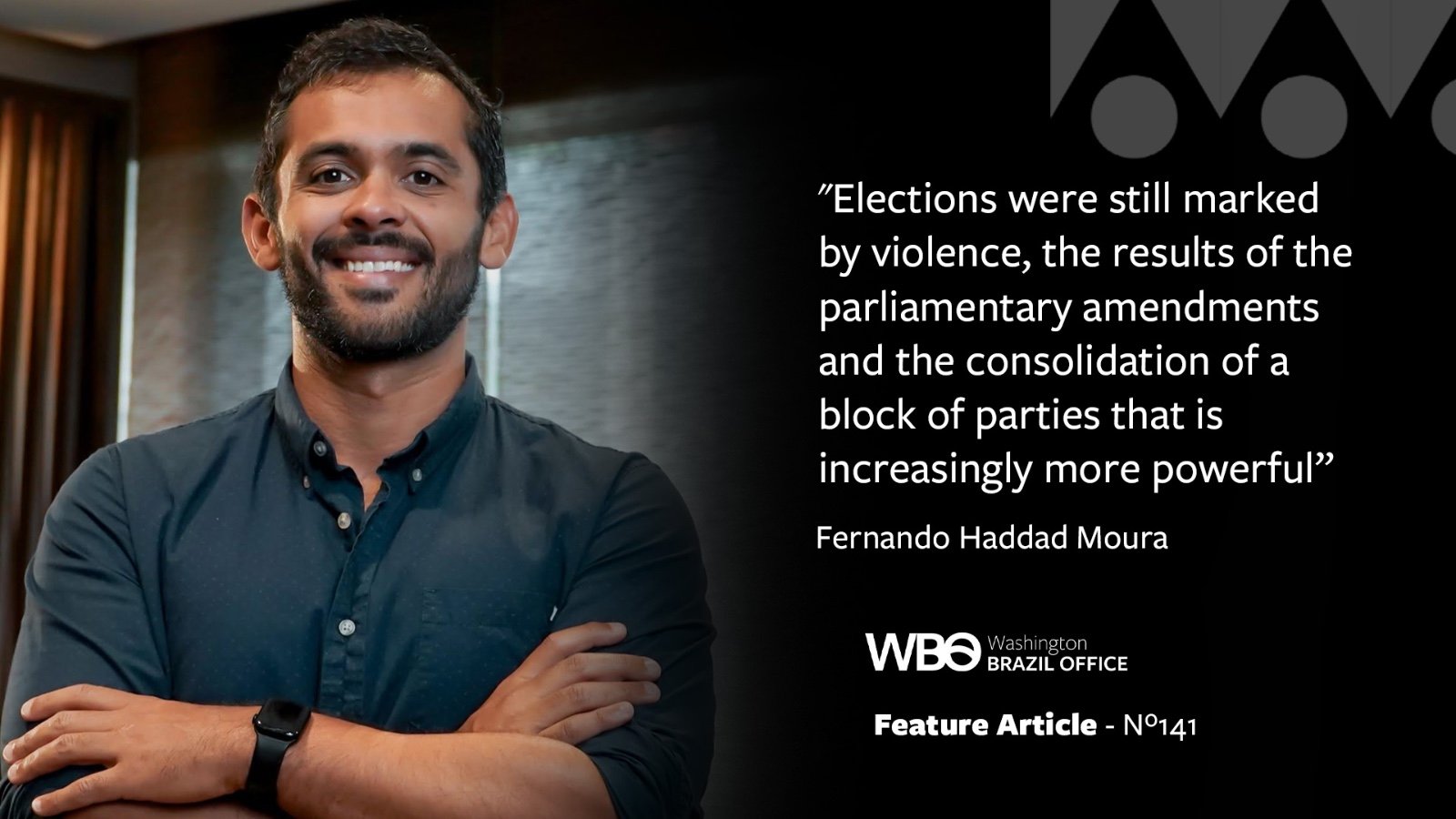What the 2024 Local Elections Signal for the Future of Politics in Brazil
Fernando Haddad Moura is currently the Executive Director of Legisla Brazil and holds a Master’s in Public Administration from Columbia University. This article was written for issue 141 of the WBO weekly newsletter, dated November 1st, 2024. To subscribe to the newsletter, enter your email in the field below.
If we were to paint the map of Brazil with the results of the 2024 municipal elections with the same logic that the USA does, red for the Republicans (right wing) and blue for Democrats (left wing), that map would be covered in red. Different from the dual party system present in the United States, Brazil currently has 29 registered parties across the political spectrum, and it is the parties from the center to the right that were dominant and won the majority of the mayors in Brazil's 5,569 municipalities. However, if that red meant blood, then that map would have many dots on it. In the first round of the elections, between August 16th and October 6th, 373 occurrences of violence against candidates or their staff were registered with 100 murder attempts and 10 assassinations, an increase of 130% since the 2020 elections, according to a study by Terra de Direitos and Justiça Global. Now if the color green represented money, that map would be covered with the billions of dollars from parliamentary amendments sent by congressmen to their base and that heavily influenced electoral outcomes. Characterized by less polarization than in 2022, these elections were still marked by violence, the results of the parliamentary amendments and the consolidation of a block of parties that is increasingly more powerful.
Let's start with the first topic. Brazil has a history of violence and is ranked one the highest in homicide per capita around the world. The political sphere is no exception. From murder attempts against candidates to violence in televised debates, this election seemed even more violent and saw local disputes get national coverage and swarm social media causing anger and distrust of politicians. In São Paulo, for example, three days before the election, 60% of voters said they had chosen their candidates for the lack of a better option. The Supreme Electoral Court is debating how to face this escalation of violence but still faces huge challenges in upcoming elections.
Another factor that had a tremendous influence were the parliamentary amendments, a system allowing Brazilian congress members to direct federal resources to specific municipalities. Since additional forms of amendments were created in 2021, more than US$ 14 billion has been distributed across Brazil. According to a study by Folha de São Paulo, mayors who received more than three times the national median amount of these amendments per voter achieved a 92% re-election rate. This trend indicates that access to federal funds is a powerful tool for political advantage, as these boosted mayors consistently saw re-election rates up to 20 percentage points higher than those who received less than the median and underscores the growing impact of federal resources on local election outcomes, reshaping political dynamics at the municipal level.
Most recently some journalists and political scientists have been observing the consolidation of a group of parties called the G7, a bloc formed by the seven most powerful political parties in the country: the Social Democratic Party (PSD), Brazilian Democratic Movement (MDB), Liberal Party (PL), Republicans, Workers Party (PT), Unity Brazil (União), and the Progressive Party (PP). Even before the 2024 elections, it was clear how influential these parties had become — they hold 80% of the seats in Congress and control 70% of the federally funded Campaign Fund. Excluding the only left-wing party of the block, Lula's Workers’ Party (PT), in the second run off of the municipal elections, this group, together, elected 4,019 mayors, which accounts for 72% of the 5,569 municipalities. Notably, the three left/center-left parties with the most elected mayors — Brazilian Socialist Party (PSB) with 309, Workers’ Party (PT) with 252, and the Democratic Labor Party (PDT) with 150 — combined for a total of 711 mayors, or 13% of the national total. In the legislative branch, the group increased the number of city councilors by 19% from 2020 to 2024, reaching a total of 36,792 councilors, which represents 63% of municipal legislators. These results show three things: the consolidation of power into less political parties; the dominance of the center-right, right, and extreme right in Brazilian politics; and how well-positioned these parties and their representatives will be in the 2026 national elections.
With the end of this election, Brazil's political eyes look toward the election of the president of the House of Representatives and the Senate. Projected to take place in February, the 513 federal Congressmen will choose what many would say is the second most powerful position of the Republic.
The current president of House, Arthur Lira (Progressive Party, PP) from Alagoas, who maintains a very turbulent relationship with the Lula government, after facing challenges in choosing his successor, declared this week his support for Hugo Mota (Republicans) from Paraíba.
The question now is whether Lula will have the political ability and capital to help elect someone who can work in better harmony with him, or will the right and center parties use their leverage and force to withhold all their power, keeping the federal government on its knees? Regardless of who wins, February marks the beginning of this process, which will answer a bigger question: who are the candidates that these powerful political parties will choose to complete against President Lula who will likely run for a fourth term in 2026? The answer will surely come from those who have gained an immense amount of power in the Senate, the House, and now in thousands of municipalities.


